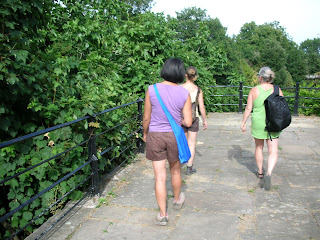
This image, taken by NASA shows the huge delta, where the Yukon River ends its 3,185 km (1,982 mile) journey to the Bering Sea. Looking very much like a human heart, the photo inspired me to reflect on the global implications of our rivercities project – and on the fragile interconnectedness of Earth's circulation system. Rivers form but one aspect of the global water cycle (the hydrologic cycle) – the continuous circulation of Earth’s water – shifting from liquid to vapour to frozen; from glaciers, rivers, oceans, clouds, groundwater, the cells/circulation systems of living things. Rivers are literally flowing through us: ”Every drink we take has water molecules that evaporated from the canopies of every forest in the world, from all of the oceans and plains” (Dr David Suzuki in The Legacy: An Elder's Vision for Our Sustainable Future). And so we have realised that this movement – into, through, beyond – must characterise also the performance work that we create from our rivercities research.
We now envision creating a series of local events/actions/installations in several human settlements along each river. This idea doesn't make the project easy, but will underline the continuous flow and transpiration of earth's water. Rivers are never completely still (the water moves) despite human industrialisation. Working in several countries, we are able to gather sounds, impressions, actions, stories, images, and video from a wide range of rivercities...and then emphasise the global nature of the water cycle, and the global impacts of human societies, by taking discoveries from one place and transferring them to other places. The sound of a river in Sweden during a rainstorm might find its way into a performance/installation somewhere along a river in England. This circulation of impressions between different rivercities around the globe will be an essential aspect of the project.





























